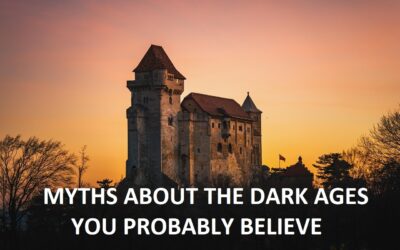Class IX Geography NTSE: 25 Most Expected Questions From Chapter 1 and 2

GEOGRAPHY IX NTSE
Class IX Geography NTSE (Social science) not only helps the students in scoring more marks but also saves time from solving mathematical numerical. If you are ready to accept the challenge then try to solve these 25 most expected questions from class IX Geography. These 25 class IX Geography NTSE questions have been prepared to mainly check the concepts in Geography.
Here is what aspirants can do to maximize their chances by preparing class IX Geography NTSE-2020
National Talent Search Examination (NTSE) is a scholarship exam conducted by the National Council of Educational Research and Training (NCERT) for identifying talented students who want to pursue higher education in Science and Social Studies streams.
ABOUT NTSE:
The exam is a National level competition.
It is conducted for the students studying in class 10th.
Class IX NTSE 2020-21 Geography: most expected NTSE questions
Chapter-1 India – Size and location
1. There is a place A with Longitude 45°30′ E. There is another place B with Longitude 37°W. If Local time at Longitude A is 11:00 a.m. What would be the Local time at place B?
a) 04:30 am Hrs.
b) 04:30 pm Hrs.
c) 05:30 am Hrs.
d) 05:30 pm Hrs.
2. Which of the following is correct about India:
a) India has a coastline of 33214 Km
b) India’s North-South extension is less than it’s East-West extension.
c) India has a total area of about 3.28 million sq. km.
d) Gulf of Mannnar separates India with Lakshadweep.
3. __________ is a group of islands closely scattered in a body of water.
a) archipelago
b) cordillera
c) Isthmus
d) trench
4. A narrow channel of sea which separates two land masses is known as _______
(a) Bay
(b) Gulf
(c) Strait
(d) Valley
5. ______________ city is located at maximum Northern Latitude.
a) Mumbai
b) Shimla
c) Shillong
d) Ooty
HOTS Questions
6. Rad Cliff Line separates India with
a) Pakistan
b) Afghanistan
c) China
d) Bangladesh
7. Which country shares the longest international boundary with India?
a) Nepal
b) Bangladesh
c) China
d) Myanmar
8. The tropic of cancer passes through how many states of India?
a) Eight
b) Nine
c) Eleven
d) Twelve
10.The sun rises two hours earlier in Arunachal Pradesh as compared to Gujarat. What time will the watch show in Arunachal Pradesh if it is 6:00 am in Gujarat (Local Time)?
a) 8:00 am
b) 6:00 am
c) 6:20 am
d) 4:20 am
11. Which of the following states does not share a common border with Bangladesh?
a) Assam
b) Meghalaya
c) Nagaland
d) Tripura
12.The Northernmost point of India is known as __________________
a) Indira heights
b) Palk strait
c) Mc Mohan line
d) Indira Col
13. Which Latitude separates Andaman with Nicobar islands
a) 6°4′ N
b) 8°4′ N
C) 10° N
D) 23°30′ N
14. Which of the following states has the largest coastline ?
a) Maharashtra
b) Tamilnadu
c) Andhra Pradesh
d) Gujaarat
15. What is the difference between India’s East West extent and North South extent?
a) 210 km
b) 281 km
c) 314 km
d) 333 km
Application based questions
16. When is the shortest night in the Northern hemisphere?
a) 21st March
b) 23rd September
c) 21st June
d) 22nd December
17.The standard time meridian of India passes through_______
a) Mirzapur
b) Greenwich
c) Muradabad
d) Ahmedabad
18. When did Indira-Point submerged under water?
(a) 2002
(b) 2004
(c) 2006
(d) 2008
19. The southernmost point of India is
a) Kanyakumari
b) Cape comorin
c) Indira point
d) Kawaratti
20. Through how many states does the Indian Standard Meridian pass through?
a) five states
b) six states
c) seven states
d) eight states
Map based questions:
21. Meghalaya shares it’s border with Bangladesh from _______
a) North-east
b) North-west
c) South-east
d) South-west
22. What is common with Sikkim, West-Bengal and Arunachal Pradesh?
a) They all share borders with five Indian states.
b) Tropic of cancer passes through all these states.
c) They share International border with three countries.
d) They all are land-locked states.
23. China is the ………………….. largest country in the world?
a) Second
b) Third
c) Fourth
d) Fifth
24. Port-Blair is in
a) Andaman-Nicobar islands.
b) Lakshadweep
c) Pondicherry.
d) Diu and Daman
25. Suez canal was opened in the year
a) 1965
b) 1967
c) 1969
d) 1971
Answer key: Class IX NTSE 2020-21 Geography
- c) 05:30 am Hrs. 2. c) India has a total area of about 3.28 million sq. km. 3. a) archipelago 4. (c) Strait 5. b) Shimla
6. a) Pakistan 7. b) Bangladesh 8. a) Eight 9. c) Kanyakumari 10. a) 8:00 am 11. c) Nagaland 12. d) Indira Col
13. C) 10°N 14. d) Gujarat 15. b) 281 km 16. c) 21st June 17. a) Mirzapur 18. (b) 2004 19. c) Indira point
20. a) five states 21. d) South-west 22. c) They share International border with three countries. 23. c) Fourth
24. a) Andaman-Nicobar islands. 25. c) 1969
Class IX NTSE 2020-21 Geography: most expected NTSE questions
CHAPTER-2 PHYSICAL FEATURES OF INDIA
1. Which of the following is responsible for the variation in colour of soil in different parts of India?
a) Weathering
b) Erosion and deposition
c) Land use pattern
d) Difference in rock formations
2. According to the “Theory of Plate Tectonics,” the movement of the plates result in some geological activity.
Which one of the following is not such a geological activity?
a) Volcanic activity
b) Glaciation
c) Folding
d) Faulting
3. The peninsular plateau of India is part of which of the following landmass?
a) Eurasian
b) Angara land
c) Gondwanaland
d) Tethys
4. Which one of the following physio-graphic divisions is considered as an unstable zone by the Geologists?
a) The Thar Desert
b) The Northern mountains
c) The Northern plains
d) The coastal plains.
5. The Himalayas are divided into three different ranges.
Which range of Himalaya is perennially snow bound?
a) Himachal
b) Himadri
c) Shiwaliks
d) Purvanchal
6. Consider the following statements and identify the right ones:
i) the peninsular block is rigid and stable in it’s geological structure.
ii) the Himalayas are young, weak and flexible in it’s geological structure.
a) I only
b) ii only
c) both
d) none of these
application based questions
7. The origin of Himalayas can be best explained by
a) Theory of Plate Tectonics
b) Continental drift Theory
c) The Big Bang Theory
d) none of these.
8. What are Lesser Himalayas known as
a) Himadri
b) Himachal
c) Purvanchal
d) Shiwaliks
9. Which continents of today were the part of Gondwanaland?
a) Asian and Africa
b) Europe and Australia
C) North america and South America
d) South America and Australia
10. “Doab” means
a) Land between two rivers
b) Two rivers flowing in different directions
c) Land between the dis-tributaries
d) Two rivers merging in the sea.
11. Which island group of India is known for “corals”?
a) Andaman and Nicobar islands
b) Lakshadweep islands
c) Majuli islands
d) Barren islands.
12. The Deccan plateau lies to the south of _______ river.
a) Godawari
b) Mahanadi
c) Chambal
d) Narmada
13. According to the “Theory of Plate Tectonics” in the process of convergence (two plates coming closer), which of the following is not possible
a) one plate may slide under the other
b) the plates may collide and crumble
c) the plates may move horizontally pass one another
d) the plates may form divergent boundary.
14. What created the rocky layer in the Peninsular plateau?
a) an asteroid striking the earth
b) the bones of dead dinosaurs
c) molten rocks erupting from below the surface of the earth.
d) a huge earthquake in southern India.
HOTS Questions
15. ____________ plateau marks the eastward extension of central highlands.
a) Chota Nagpur plateau
b) Malwa plateau
c) Eastern ghats
d) Deccan plateau
16. Find the odd one out
a) Namcha barwa
b) Doda Betta
c) Anai Mudi
d) Mahendra Giri
17. Crescent shaped dunes found in desert regions are called________
a) Sand dunes
b) Oasis
c) Barchans
d) Luni
18. _________is the central stretch of the western coastal plain.
a)Malabar coast
b) Kannad coast
c) Coromandal coast
d) Konkan coast
19. The highest peak of western ghat is Anai Mudi. On which hill is it located?
a) Nilgiri hills
b) Annamalai hills
c) Javadi hills
d) Cardamom hills.
20. The famous exotic bird sanctuary in Lakshadweep is
a) Bharatpur bird sanctuary
b) Pulicat bird sanctuary
c) Kolleru bird samctuary
d) Pitti bird sanctuary
21. According to the Theory of Plate Tectonics, the earth’s crust was initially a single,
giant super-continent called______
a) Angaraland
b) Gondwanaland
c) Pangea
d) Tethys
22. Which is the longest mountain range in the Lesser Himalayas?
a) Pir Panjal
b) Karakoram
c) Zaskar
d) Krishnagiri
23. The part of the Himalayas lying between Satluj and Kali rivers is known as
a) Punjab Himalayas
b) Assam Himalayas
c) Kumaon Himalayas
d) Nepal Himalayas
24. The Purvanchal does not consist of ______ hills.
a) Patkai hills
b) Cardamom hills
c) Jaintia hills
d) Mizo hills
25. The Jawahar tunnel was constructed under which of the following pass?
a) Shipli La
b) Rohatang Pass
c) Banihal Pass
d) Rohatang pass
Answer Key: Class IX NTSE 2020-21 Geography
1. d) Difference in rock formations 2. b) Glaciation 3. c) Gondwanaland 4. b) The Northern mountains 5. b) Himadri
6. c) both 7. a) Theory of Plate Tectonics 8. d) Shiwaliks 9. d) South America and Australia 10. a) Land between two
rivers 11. b) Lakshadweep islands 12. d) Narmada 13. d) the plates may form divergent boundary 14. c) molten rocks
erupting from below the surface of the earth. 15. a) Chota Nagpur plateau 16. a) Namcha barwa 17. c) Barchans
18. b) Kannad coast 19. a) Nilgiri hills 20. d) Pitti bird sanctuary 21. c) Pangea 22. a) Pir Panjal 23. c) Kumaon
Himalayas 24. b) Cardamom hills 25. c) Banihal Pass




0 Comments